Geology, rocks and fossils
How our local landscape has changed since the beginning of time
Britain's rocks and fossils tell the story of how Britain has moved around the earth's surface and the various environments and events it has encountered on the way, over millions of years; moving plate tectonics, continental drift, sea-level change and climate change.
Geologists use a geological timeline to date events in earth's history. It's based on the idea that different layers of rock, or strata, represent different periods of time. It divides all time into named units, and allows us to compare rocks and fossils from throughout the world. In Britain, we have carboniferous coals, Triassic sandstones, Jurassic limestones and clays and Cretaceous chalks.
Geological sites can be found throughout Kirklees:
- Bannister Edge, Meltham - White Rock (sandstone) and plant fossils
- Beaumont Park, Huddersfield - Millstone Grit (sandstones and siltstones)
- Caulms Wood Quarry, Dewsbury - Sandstone and coal seams
The landscape is still continually changing in response to the Earth's natural processes and human activity.
What to expect in the box
Trilobites were a marine animal that first appeared 521 million years ago.
The last trilobites went extinct 251.9 million years ago, during the Permian mass extinction, which wiped out more than 90% of all species on earth.
In that time many different types of trilobites evolved to suit different purposes such as predators, scavengers and filter feeders.
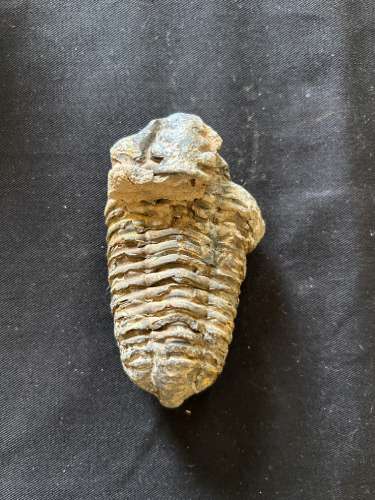
Graptolite fossils are often shiny markings on a rock's surface which look like they've been drawn by a pencil.
They lived 520-350 million years ago and lived in colonies of up to 5,000 animals.
They lived in systems of tubes made from collagen.
Early Graptolites lived on the sea bed although they later evolved to float in the water.
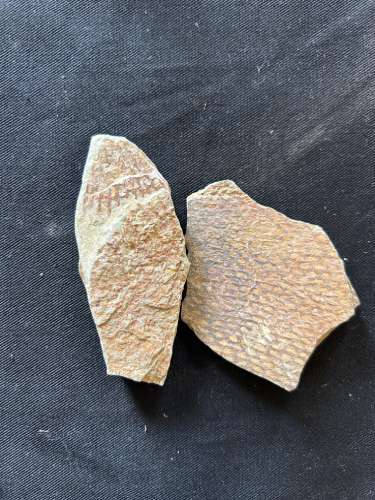
Adder stones, also known as hag stones or witch stones, are small rocks with naturally-formed holes through them.
These stones are typically sedimentary rocks.
The reason for the hole is usually dissolution by water, or degradation of a less stable material.
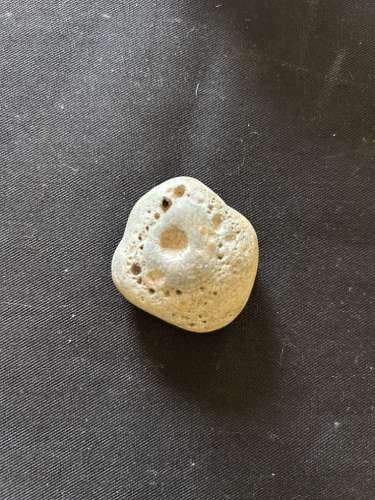
Rhacolepis was a ray finned fish from around Brazil.
They are one of few species that palaeontologists have found the fossilised heart of.
They lived in the Cretaceous period 145-66 million years ago.
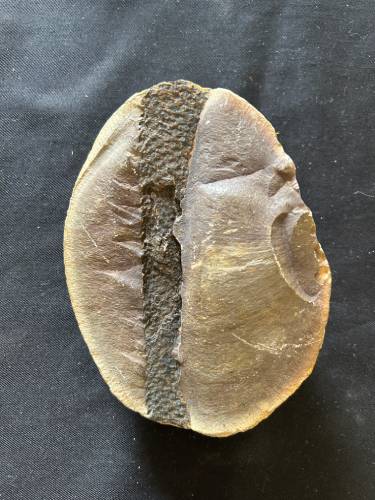
Also known as the heart urchin, this creature lived deep in the mud where it would feed on the organic matter found there.
They lived in the Cretaceous period, which began 145 million years ago and ended 66 million years ago.
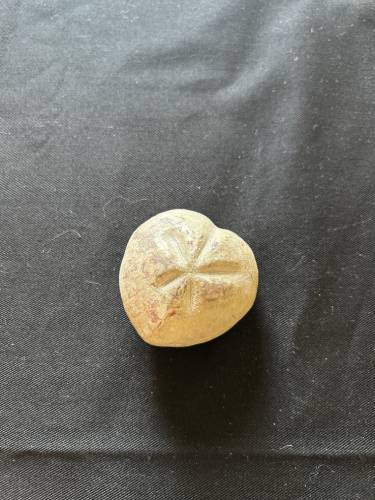
Geodes like this one are formed when there are pockets of air within rocks. Water is then able to seep in and deposit the minerals that form the geode.
Calcite is found all over the world including the UK.
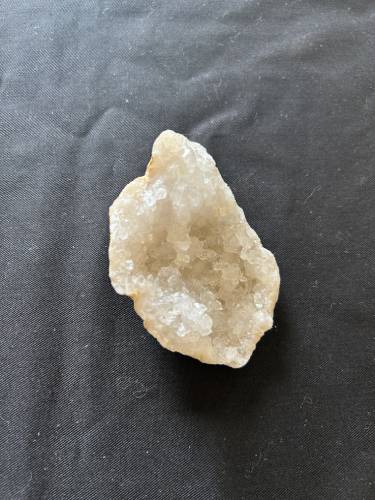
Mosasaurs lived in the late cretaceous oceans and were the dominant marine predator.
They breathed air and gave birth to live young as opposed to laying eggs like many other sea creatures.
The smallest known mosasaur was less than one meter in length, although they could grow to up to 17 meters.
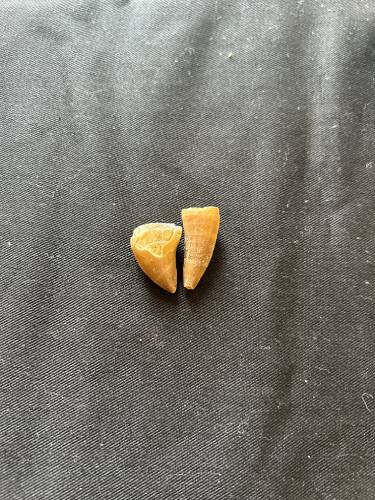
Ammonites looked like squids, and often lived in shells.
It is these shells that are often found as fossils.
Ammonites lived between 409 and 65 million years ago, and their fossils can be found everywhere on Earth, but are most common in Antarctics.
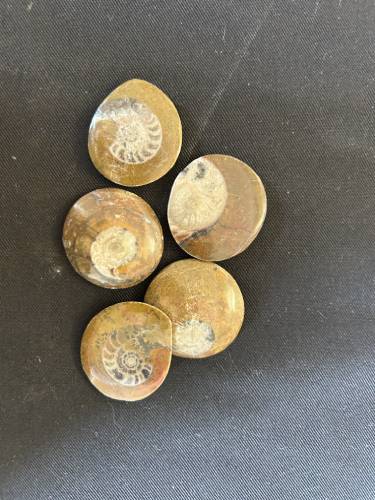
Archaeopteryx was a bird-like dinosaur from the late Jurassic period, about 150 million years ago.
It lived in what is now southern Germany.
It was similar in size to a magpie and likely used its feathered wings to fly or glide.
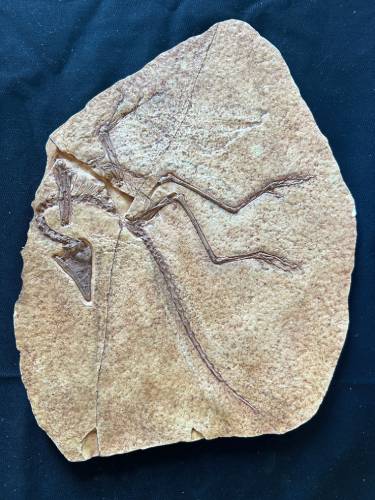
Oxford clay formed during the middle to late Jurassic period and is found in the south east of England.
It is made of fossilised mudstone.
Many fossilised fish have been found in Oxford clay.
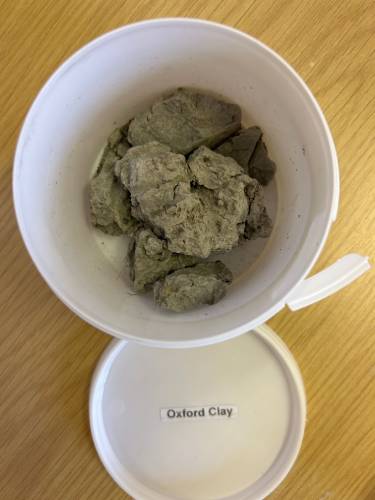
Limestone is a sedimentary rock composed mostly of calcite and aragonite.
Limestone is very common and often contains fossils.
Limestone was often formed in shallow waters.
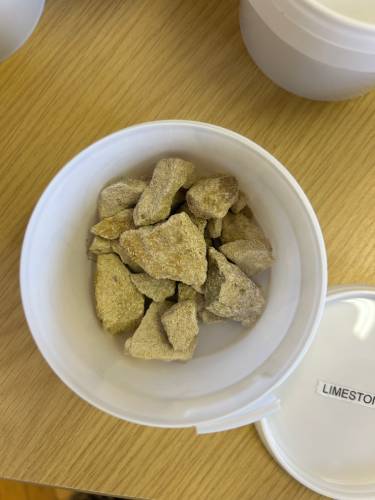
Basalt is the most common type of volcanic rock making up to 90% of all volcanic rock on Earth.
Basalt is formed when lava, that is rich in magnesium or iron, cools.
Basalt is typically dark grey or black but can appear quite light in certain circumstances.
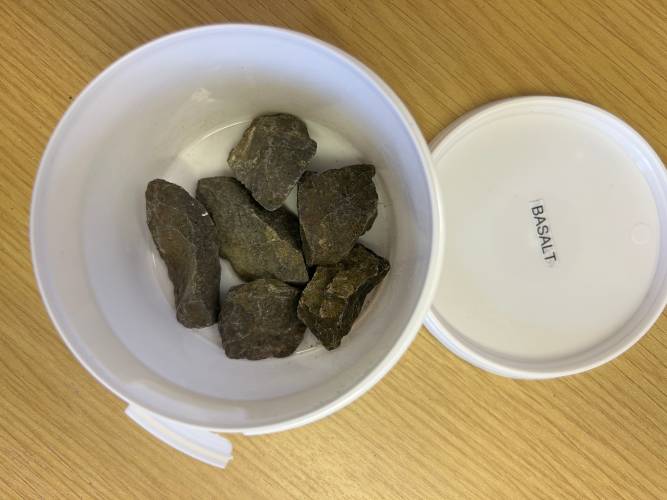
Slate is a type of sedimentary rock made up of clay and volcanic ash.
It forms thin layers and when mined with certain tools produces flat sheets that are used for roofing and floor tiles.
Slate is typically grey but can occasionally form in colours such as purple, green and cyan.
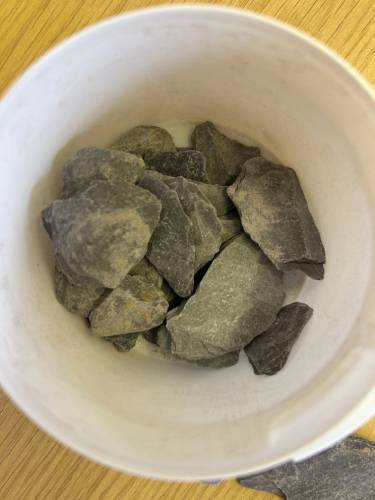
Felsite is a form of volcanic rock which sometimes contains crystals.
It is generally light grey but can be red or tan in some cases.
The rock is typically made of quartz, sodium and potassium.
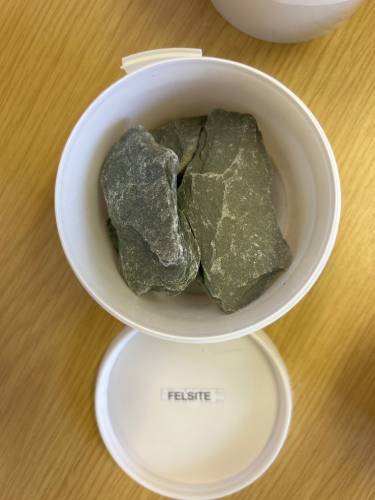
Gneiss is formed when rocks are placed under high pressure and high temperature.
It typically has a banded texture.
Some of the oldest rocks of earth are gneiss.
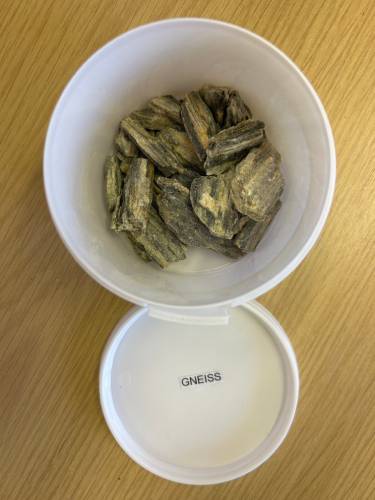
Gabbro is formed during the cooling of magnesium and iron rich magma beneath the earth's surface.
It is typically found in ocean ridges.
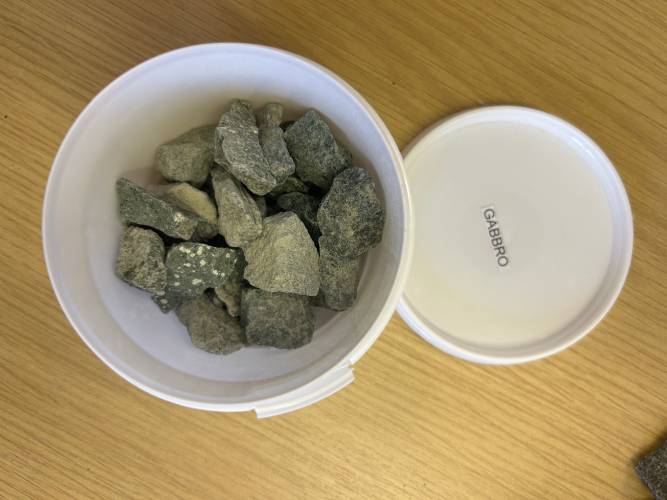
Chalk is a soft, white, sedimentary rock.
It is a type of limestone made up of lots of calcite and was originally formed deep under the sea.
Chalk is common throughout western Europe such as the Dover cliffs.
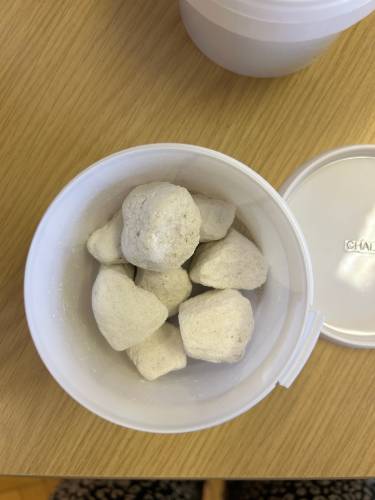
Marble is formed when limestone is exposed to high temperatures and is put under high pressure.
It has a crystal-like texture and typically contains layers.
Marble is commonly used to make sculptures.
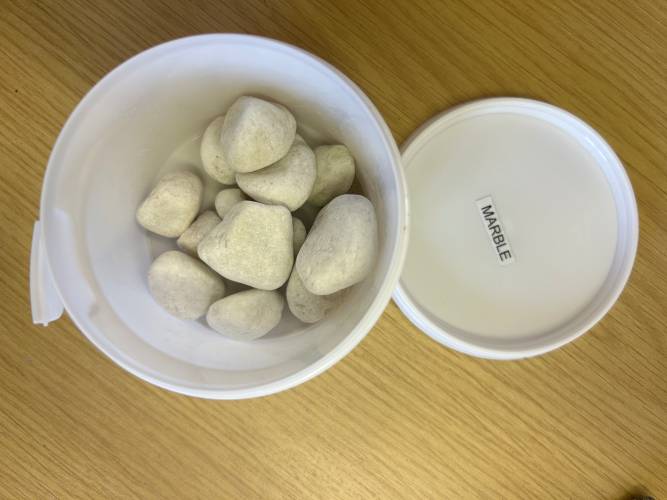
Sandstone is typically made of sand-sized grains of quartz as they are resistant to much of the weathering on the earth's surface.
Sandstone can be any colour but is commonly tan, brown, yellow and red.
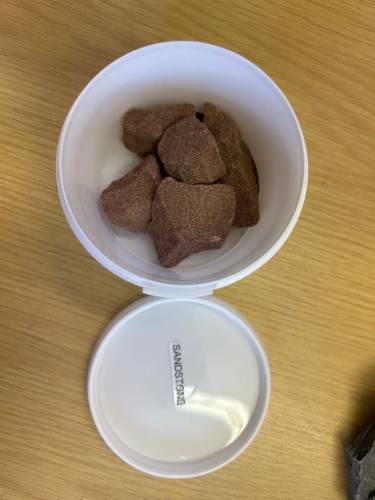
Bubble basalt is made of the same material as regular basalt.
The bubbles are formed during the eruption process and the texture of the basalt depends on how it cools.
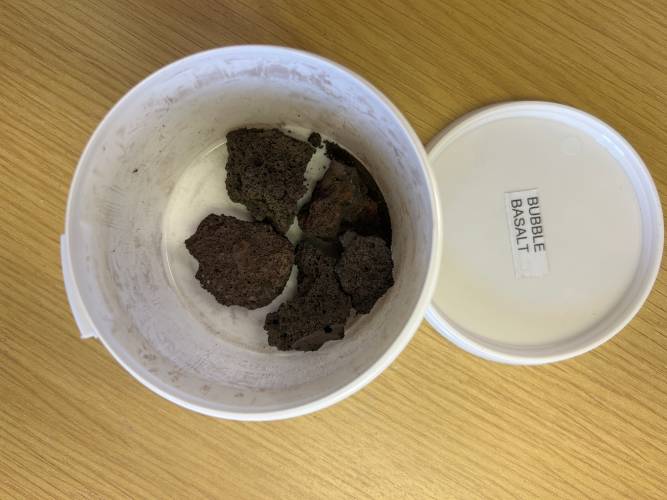
Granite is formed when magma with large amounts of silica slowly cools underground.
It typically contains large amounts of quartz.
Granite is typically tough so it has been used in buildings throughout human history.
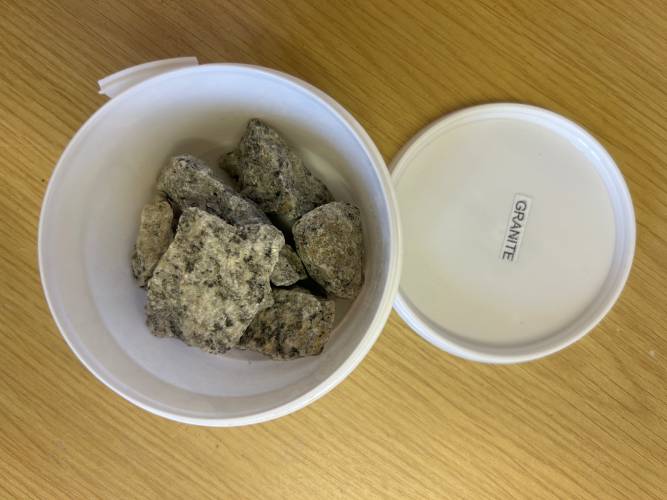
Explore the following themes using the objects
- Materials
- Geology
- Evolution
- Habitats
- Geography
- Extinction
- Chronology




